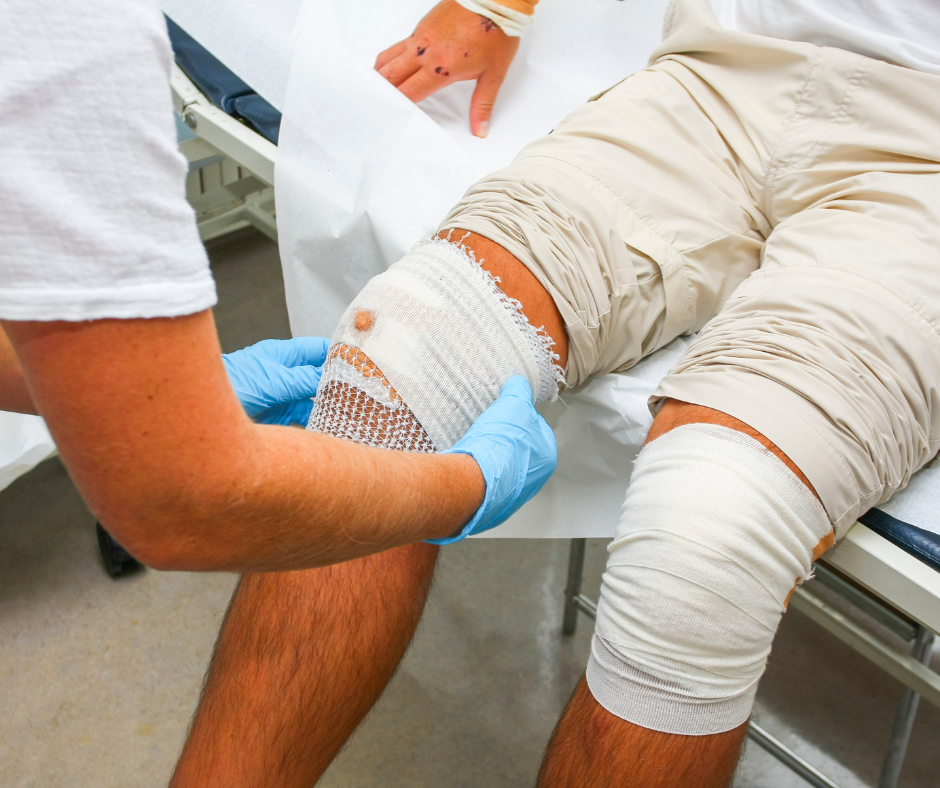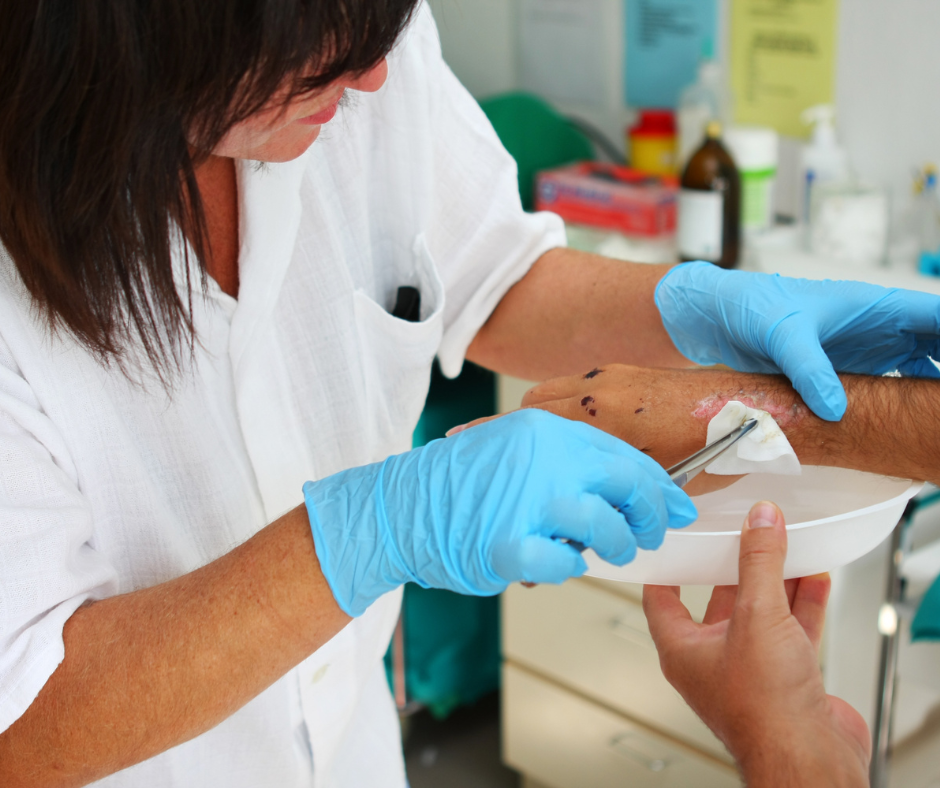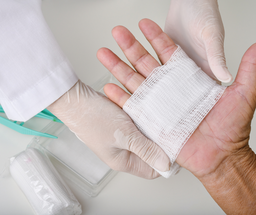Posted by Online Medical Supply Canada on 2023 Dec 27th
Patient-Centered Wound Care: A Holistic Approach Shaping Canadian Nursing Practices

Understanding the Holistic Approach To Wound Care:
In the evolving landscape of Canadian wound care, embracing a holistic approach involves recognizing patients as complete individuals rather than merely recipients of wound care. It's about acknowledging the interconnectedness of physical, emotional, and social aspects in the healing process. Empathy-driven care, at its core, entails active patient involvement in decision-making, promoting a shared healing journey. Additionally, cultural sensitivity plays a pivotal role, necessitating an understanding and respect for diverse cultural backgrounds, aligning wound care plans with individual beliefs and preferences.
The Role of Advanced Wound Dressings:
As Canadian nursing practices progress, the selection of wound dressings becomes integral to patient-centered care. Hydroactive wound dressings, at the forefront of this evolution, offer advantages that extend beyond traditional options. With their moisture-retaining properties, often containing hydrogels, these dressings maintain an optimal environment for wound healing and are a practical choice in clinical settings. Brands such as Aquacel and Hydrofera offer an extensive line of products suited to unique wound care needs.
Patients Benefit From:
- reduced pain during dressing changes
- enhanced healing processes through the promotion of angiogenesis
- granulation tissue formation.
Nurses Benefit From:
- the ease of application
- versatility across various wound types
Incorporating Antimicrobial Dressings:
In the pursuit of holistic wound care, antimicrobial dressings are a crucial component in preventing and managing infections. The choice of antimicrobial dressings requires consideration of the patient's overall health and risk factors. The proactive use of such dressings aligns with the holistic approach by addressing not only the visible wound but also potential complications that may impede the healing process.
Educating Patients for Active Participation In Wound Care:
Empowering patients to actively participate in their wound care aligns seamlessly with the holistic approach. Clear communication is paramount, ensuring that patients comprehend the specifics of their wounds, the chosen dressing, and the rationale behind the treatment plan. Beyond verbal instructions, practical demonstrations of self-care techniques equip patients with the skills needed for proper wound hygiene and medication adherence. Creating a supportive environment and addressing emotional concerns further enhance patient engagement and foster a sense of collaboration.

Cultural Sensitivity In Canadian Wound Care:
In the tapestry of patient-centered wound care in Canada, recognizing the unique cultural backgrounds of individuals is a vital thread. Cultural considerations add depth to the holistic approach, ensuring that wound care plans are not only aligned with medical needs but also respectful of diverse cultural beliefs and practices. Here's a closer look at the importance of cultural sensitivity in the context of wound care:
Cultural Competence in Wound Care:
- Recognizing and respecting diverse cultural backgrounds is foundational to providing culturally competent care.
- Training healthcare professionals in cultural competence fosters an environment where patients feel understood and valued.
Aligning Wound Care Plans with Beliefs and Preferences:
- Cultural beliefs often influence attitudes towards health, illness, and treatment.
- Understanding and aligning wound care plans with individual beliefs and preferences enhance patient engagement and cooperation.
Language and Communication:
- Language barriers can impede effective communication in healthcare settings.
- Providing multilingual resources and interpreters ensures that patients receive clear instructions and information about their wound care.
Cultural Rituals and Practices:
- Some cultures may have specific rituals or practices related to health and healing.
- Incorporating or accommodating these practices when possible can contribute to a more supportive and culturally sensitive healing environment.
Family and Community Involvement:
- In many cultures, family and community play a crucial role in healthcare decisions.
Engaging family members or community leaders in discussions about wound care can enhance support networks and contribute to a collaborative approach.
Integrating Cultural Sensitivity with Advanced Wound Care Practices:
As the field of wound care integrates advanced technologies and practices, it becomes imperative to merge cultural sensitivity seamlessly into these advancements. Here's how cultural considerations can align with the use of hydroactive wound dressings and other technological innovations:
Tailoring Dressing Choices to Cultural Preferences:
- Considering cultural preferences when selecting wound dressings, including the use of hydroactive dressings.
- Offering choices and explaining the benefits of specific dressings in a culturally sensitive manner.
Educating Patients in Culturally Appropriate Ways:
- Tailoring educational materials about wound care to be culturally relevant and accessible.
- Ensuring that patients from different cultural backgrounds fully comprehend the importance of prescribed wound care practices.
Respecting Modesty and Cultural Practices during Dressing Changes:
- Being mindful of cultural modesty expectations during dressing changes.
- Providing private spaces or incorporating cultural considerations into the logistics of wound care procedures.

Challenges and Opportunities Facing Canadian Wound Care Nurses:

The focus on patient-centered, holistic wound care in Canada brings both challenges and opportunities. Adequate resource allocation is crucial, ensuring that nurses receive the training and resources necessary to stay updated on the latest wound care technologies. Integrating advanced technologies, though challenging, presents an opportunity for improved patient outcomes. Moreover, cultivating a culture of empathy within healthcare organizations requires a concerted effort, involving awareness promotion and education at all levels. Overcoming these challenges not only enhances patient-centered practices but also contributes to a healthcare environment prioritizing the overall well-being of patients.
In the dynamic realm of Canadian wound care nursing, the ongoing shift towards a holistic, patient-centered approach represents a fundamental evolution. This approach, emphasizing the interconnectedness of physical, emotional, and cultural aspects, is complemented by the integration of advanced wound dressing technologies. Hydroactive wound dressings exemplify this synergy, providing unique benefits that enhance both patient outcomes and overall well-being. Through this holistic paradigm, Canadian wound care nurses are not merely treating wounds; they are fostering a healthcare environment that prioritizes the comprehensive health and healing of those under their care.
FAQ’s
Q: How does the holistic approach differ from traditional wound care practices?
A: The holistic approach recognizes patients as complete individuals, addressing not only the physical wound but also the interconnected aspects of their emotional, social, and cultural well-being. This stands in contrast to traditional practices that may focus solely on the physical aspect of wound care.
Q: Why is cultural sensitivity emphasized in wound care?
A: Cultural sensitivity is vital in wound care to ensure that treatment plans align with diverse cultural beliefs and practices. This fosters an inclusive and respectful healing environment, contributing to better patient engagement and cooperation.
Q: What are hydroactive wound dressings, and how do they benefit patients and nurses?
A: Hydroactive wound dressings maintain a moist environment for optimal wound healing, often containing hydrogels. Patients experience reduced pain during dressing changes, and nurses find them practical due to ease of application and versatility across various wound types in clinical settings.

